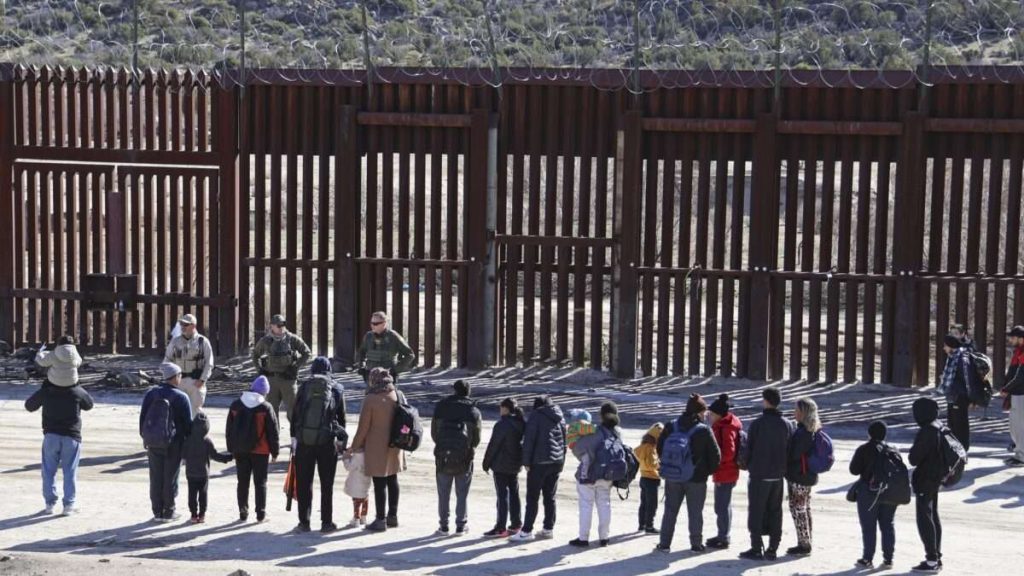Since late 2022, the United States has experienced a dramatic increase in the number of Chinese migrants crossing the southern border. American immigration authorities arrested 37,000 Chinese nationals at the border in 2023—over 10 times the number arrested the year before—per an Associated Press report.
There is no shortage of people who are suspicious of the migrants (and who insinuate that they’re coming to sow chaos on China’s behalf). “They’re all military age and they mostly are men,” observed former President Donald Trump during a campaign rally last month. “And it sounds like to me, are they trying to build a little army in our country?”
The America First Policy Institute called the influx “the Trojan horse at the southern border,” suggesting that “Chinese nationals pose a heightened risk to U.S. national security” due to the Chinese Communist Party (CCP) and its National Intelligence Law, “which states that any citizen must assist their intelligence network if called.” The Republican National Committee has condemned the Biden administration for “Chinese military-aged men” entering the country. The Federation for American Immigration Reform cited the “inherent danger created when aliens from adversarial nations flood our border.”
There are many reasons why Chinese migrants are the fastest-growing group attempting to cross the southern border (though those numbers have fallen in early 2024). Recent research and reporting—and common sense—cast doubt on the overly simplistic idea that Chinese border crossers are primarily coming to the U.S. to threaten national security and create disorder. It’s far more likely that the average Chinese migrant is coming for the same reasons that other migrants do: to seek political and economic freedom. Rather than rebuking the people who go to such great lengths to flee China’s authoritarian regime, the U.S. should welcome them.
A new report from the Niskanen Center, a public policy think tank, found that many Chinese emigrants are coming from areas experiencing repression such as Hong Kong and Xinjiang, the province where the Chinese government is committing ongoing human rights abuses against the Uyghur people. Niskanen based its estimates on Ecuadorian travel statistics: “Since most Chinese migrants enter the Americas via Ecuador, these records can reasonably be used to draw inferences about irregular Chinese migration.”
However, author Gil Guerra cautions that “the numbers from this dataset need to be stronger to indicate that persecution is a necessary driver for irregular travel from China to Ecuador,” noting that other provinces that have experienced broad repression, such as the Tibet Autonomous Region, did not record outbound travel to the same degree as Hong Kong and Xinjiang.
The Niskanen report suggests that economic decline may play a role in Chinese out-migration, noting that three provinces from China’s “Rust Belt” rank in the top third of origin regions when adjusted for population. The economic consequences of China’s pandemic policy are also at play: “In many cases those attempting to make the crossing are small-business owners who saw irreparable damage to their primary or sole source of income due to China’s ‘zero COVID’ policies,” wrote Meredith Oyen, a historian at the University of Maryland, Baltimore County, last month.
“The increase in Chinese arrivals is also a response to U.S. politics,” wrote Foreign Policy Deputy Editor James Palmer last week. “During the pandemic, U.S. business and tourist visas became harder for Chinese citizens to obtain.” (Per CBS News, the U.S. issued 2.2 million temporary visas to Chinese nationals in 2016, but that number dropped to 160,000 in 2022.) “The acceptance rate for Chinese asylum claims,” Palmer added, “is a relatively high 55 percent,” at least somewhat attributable to “U.S.-China tensions and growing human rights abuses under Chinese President Xi Jinping.”
Critics of the uptick in Chinese border crossers might look at all of this and nonetheless worry about individual security risks, fret over an influx of “military-aged men,” or allege that the CCP is carrying out a sophisticated infiltration scheme via asylum seekers. But there are a few issues with this line of thinking, as Guerra has pointed out.
For one, “you have to believe that the CCP is spending thousands of dollars per head to send each migrant through a lawless and dangerous route with multiple points of failure where they can be kidnapped, killed, or stopped by local authorities,” Guerra argued. That might make sense if the point was for migrants to evade detection, but in reality, Chinese nationals “are presenting themselves for asylum at overwhelming rates.” That process involves the collection of biometric data and presents the risk that they’ll be “denied asylum or put in custody.” While the CCP “absolutely abuses our immigration system to conduct espionage,” said Guerra, it prefers legal channels “because they have less risk and more predictable outcomes.”
What pops up over and over in reports about Chinese asylum seekers is their desire for freedom. The A.P. noted that migrants said they were leaving “an increasingly repressive political climate and bleak economic prospects”—and that “there has been no evidence that they have tried to mount a military force or training network.”
Given what China is—a country under the thumb of an authoritarian government, where civil liberties and basic freedoms are under constant threat—it should come as no surprise that the U.S. is an attractive destination for the people who choose to flee. That isn’t evidence of a grand, complex espionage plan but a manifestation of all the usual reasons people choose to immigrate, and all the more reason to welcome Chinese migrants.
The post The U.S. Should Welcome Chinese Migrants appeared first on Reason.com.






